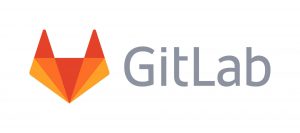One of the pitfalls in adopting DevOps is what you might call Peter Pan Syndrome.
An agency’s initial forays into integrating their development and operations teams can bear fruit quickly, leading to better quality software produced at a faster clip. The risk is that an organization will treat its initial forays as the endgame, not realizing that a more mature approach, with greater payoffs, is possible. In short, the DevOps initiatives never grow up.
GitLab, which has years of experience helping organizations with DevOps adoption, has identified four stages in a DevOps journey, culminating in an approach that delivers even greater benefits than envisioned at the outset.
Stage 1: Bring Your Own DevOps
When agencies first get into DevOps, they typically don’t take a strategic approach, i.e., deciding upfront on a common set of tools and processes.
As a result, the adoption of tools can be haphazard. “Teams doing the same type of work might standardize on a single tool to be able to collaborate with each other, but not necessarily with other teams performing downstream work,” said Sameer Kamani, Federal Solutions Architect at GitLab.
Stage 2: Best in Class DevOps
As DevOps becomes more established, that specialization results in the emergence of different fiefdoms, as people double down on using their particular tools and processes.
This introduces substantial friction into the development process, as organizations are forced to develop manual processes to work around the lack of integration. That friction reduces the speed of development, undermining one of the primary benefits of DevOps.
Stage 3: Do it Yourself DevOps
At some point, teams will attempt to solve that problem by settling on a common set of tools. But usually they take a “best of breed” approach, in which they manually integrate tools from different vendors. This approach might look good on paper, but it is difficult to use or maintain.
Organizations can find themselves pulling people off mission-oriented work just to keep those systems running, said Daniel Marquard, Senior Public Sector Solutions Architect at GitLab.
“It’s not just that you have to build those integrations — they have to be supported forever,” he said.
Stage 4: A DevOps Platform
To address these pitfalls, agencies need to adopt a DevOps platform that provides an integrated set of tools for the development and operations teams, as well as the security team.
The integration of security in the platform will help federal agencies meet the mandates of the recent executive order on cybersecurity by ensuring that security is addressed as part of the larger development process, Kamani noted.
“A DevOps platform enables application planning, management, development, orchestration, security and operations management in a way where production of all apps can be delivered quickly, repeatedly, and reliably in a short amount of time,” he said.
Just as important, the DevOps platform provides a simpler and more seamless user experience for teams throughout the software development lifecycle. This makes it more likely that users will embrace it, making it possible to transform the organization at the grassroots level.






Leave a Reply
You must be logged in to post a comment.